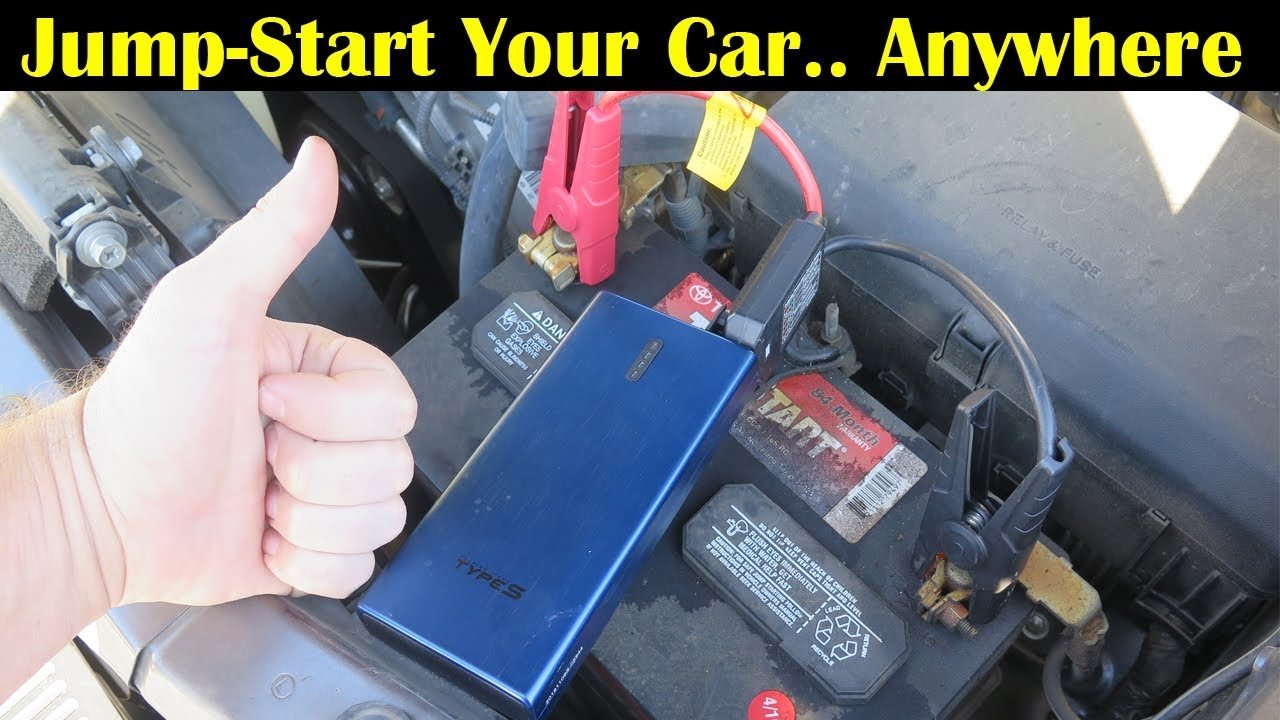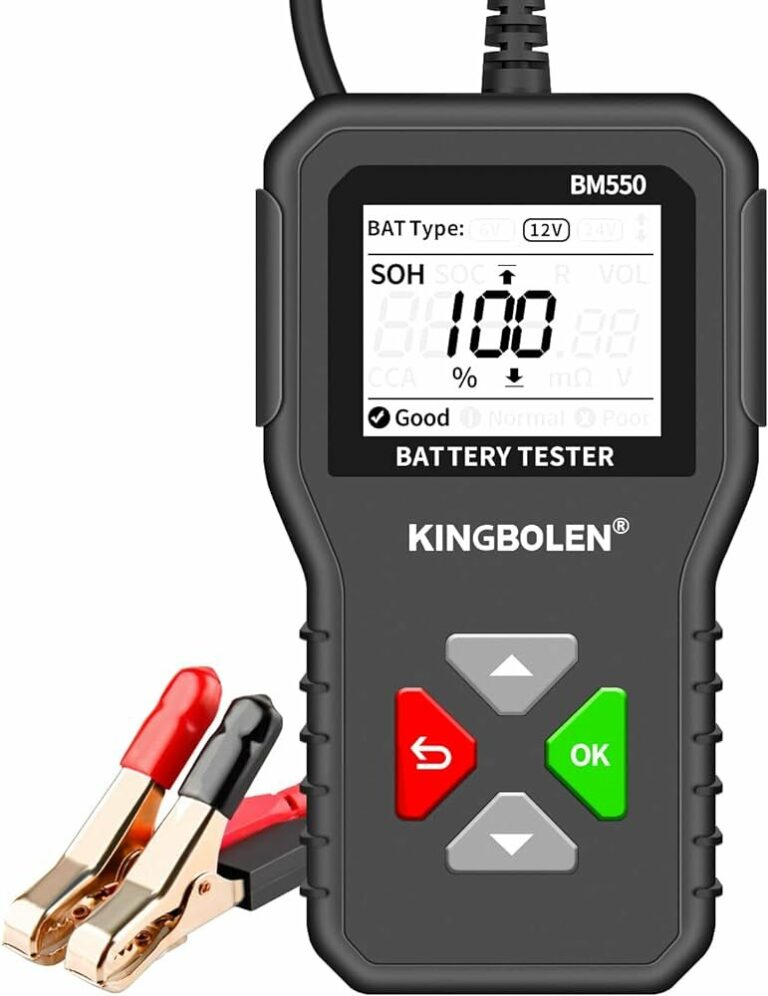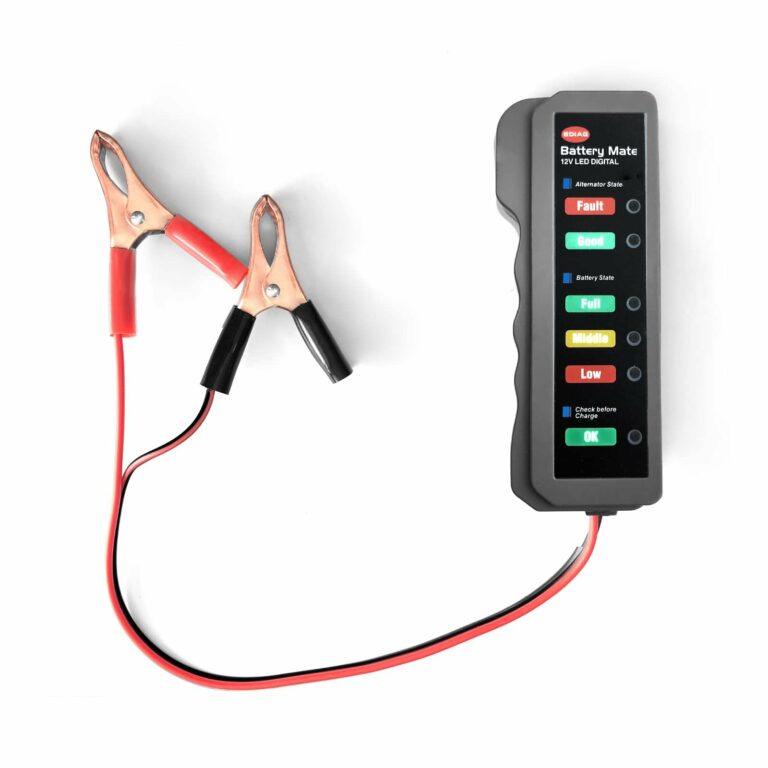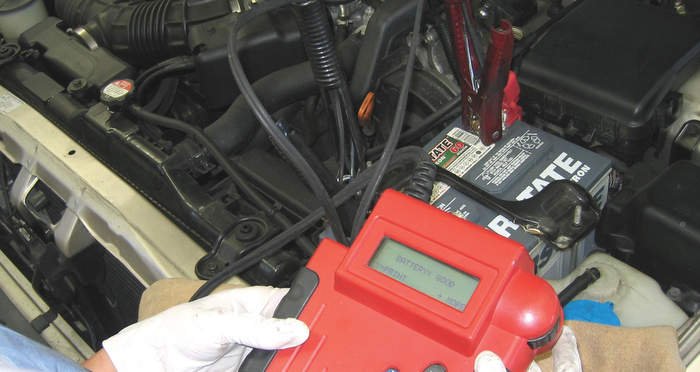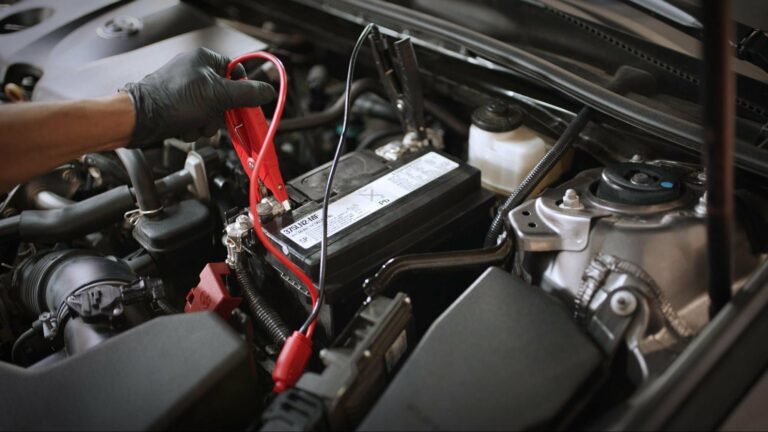Beginner’S Guide: How to Jump Start a Car with a Portable Power Pack?
Want to know how to jump start a car with a portable power pack? Don’t worry, it’s simpler than you may think. With a portable power pack, you can easily revive a dead car battery and get back on the road in no time. No more waiting for a tow truck or relying on the help of strangers. In this article, we’ll walk you through the step-by-step process of jump-starting your car with a portable power pack. So, let’s get started!
How to Jump Start a Car with a Portable Power Pack?
Jump-starting a car can be a daunting task, especially if you find yourself stranded with a dead battery in the middle of nowhere. However, with the advent of portable power packs, jump-starting a car has become easier and more convenient than ever before. These compact and lightweight devices pack enough power to revive a dead battery without the need for another vehicle. In this article, we will guide you through the step-by-step process of jump-starting a car with a portable power pack, ensuring that you are prepared for any unexpected battery failure on the road.
Section 1: Understanding Portable Power Packs
What is a Portable Power Pack?
A portable power pack, also known as a jump starter or a battery booster, is a compact and portable device designed to provide the necessary power to jump-start a vehicle with a dead battery. These power packs come equipped with built-in batteries, which store the required energy to boost a car’s battery back to life. They often feature additional functionalities, such as USB ports for charging electronic devices or built-in flashlights for emergency situations.
Why Use a Portable Power Pack?
Portable power packs offer several advantages over traditional jump-starting methods, such as using jumper cables and relying on another vehicle. Here are some reasons why you should consider using a portable power pack:
- Independence: With a portable power pack, you don’t need another vehicle or assistance from a stranger to jump-start your car. It provides a self-sufficient solution, allowing you to be prepared for battery failures wherever you go.
- Convenience: Portable power packs are compact and lightweight, making them easy to carry in your vehicle’s trunk. They are user-friendly, often featuring simple interfaces and built-in safety measures to protect both you and your vehicle.
- Safety: Jump-starting a car using traditional methods can be risky, especially if you’re not experienced or if the donor vehicle is improperly grounded. Portable power packs eliminate these risks, providing a safe and reliable way to jump-start your car.
- Versatility: In addition to jump-starting a car, portable power packs can serve as emergency power sources for various devices. They often come with multiple outlets, allowing you to charge your phone, tablet, or other electronic devices during emergencies or outdoor activities.
Section 2: Choosing the Right Portable Power Pack
Assessing Your Needs
Before purchasing a portable power pack, it’s crucial to assess your specific needs. Consider the following factors to ensure you choose the right device for jump-starting your car:
- Battery Size: Check the power pack’s capacity, usually measured in ampere-hours (Ah), to determine whether it can deliver sufficient power to jump-start your vehicle’s battery.
- Vehicle Compatibility: Ensure that the power pack is compatible with your car’s battery type and voltage. Most power packs are suitable for both gasoline and diesel vehicles.
- Additional Features: Some power packs offer extra functionalities, such as built-in air compressors for inflating tires or USB ports for charging electronic devices. Assess your requirements and choose a power pack with the features that best suit your needs.
- Safety Features: Look for power packs with safety features like reverse polarity protection, overcharge protection, and spark-proof clamps. These features enhance safety during the jump-starting process.
Researching and Comparing Options
Once you have identified your needs, conduct thorough research and compare different portable power pack models based on their specifications, user reviews, and overall reputation. Consider factors such as reliability, durability, warranty, and price to make an informed decision. Additionally, ensure that the power pack you choose has sufficient power capacity to jump-start your car’s battery multiple times on a single charge.
Section 3: Preparing for Jump-Starting
Reviewing the User Manual
Before using any portable power pack, it is essential to read the user manual provided by the manufacturer. Familiarize yourself with the instructions, safety guidelines, and any specific recommendations or precautions regarding your power pack model.
Inspecting the Power Pack
Before attempting to jump-start your car, inspect the portable power pack for any visible damage or signs of wear. Check the power pack’s battery level indicator to ensure it is adequately charged. If the power pack shows a low battery level, recharge it following the manufacturer’s instructions before use.
Locating the Battery and Terminal Points
Open your car’s hood and locate the battery. Familiarize yourself with the battery’s positive (+) and negative (-) terminals. These terminals are usually labeled, with the positive terminal often covered by a red plastic cap and the negative terminal by a black plastic cap. Ensure that the terminal points are clean and free from corrosion or debris.
Section 4: Jump-Starting Procedure
Step 1: Turn Off Everything in the Car
Ensure that all accessories, lights, and electrical systems in your car are turned off. This precaution prevents any potential power surge when connecting the portable power pack.
Step 2: Connecting the Clamps
Caution: Pay careful attention to the polarity and follow the manufacturer’s instructions to avoid any risk of electrical shock or damage to the vehicle.
- Take the red (positive) clamp of the portable power pack and securely connect it to the positive (+) terminal of the car battery.
- Take the black (negative) clamp of the portable power pack and connect it to a clean, unpainted metal surface on the car’s engine block or chassis. Ensure that this metal surface is away from the battery, fuel lines, or moving parts.
Step 3: Activating the Power Pack
Once the clamps are securely connected, activate the power pack according to the manufacturer’s instructions. Some power packs have an ON/OFF switch, while others may require a button to be pressed or a specific sequence to be followed.
Step 4: Starting the Vehicle
After activating the power pack, return to the driver’s seat and turn the ignition key to the start position. With the power pack connected, the car should start without any issues. If the engine doesn’t start, wait a few moments, then try again. Avoid continuous attempts if the engine fails to start.
Step 5: Disconnecting the Clamps
After the car has started successfully, it’s time to disconnect the clamps. Follow these steps carefully:
- Turn off the power pack or follow the manufacturer’s instructions to disconnect it safely.
- Start with the black (negative) clamp and remove it from the car’s engine block or chassis.
- Remove the red (positive) clamp from the car’s battery terminal.
Ensure that the clamps do not come into contact with each other or any metal surfaces while disconnected.
Section 5: Post-Jump Starting Steps
Charging the Portable Power Pack
After using the portable power pack to jump-start your car, it’s essential to recharge it promptly. Follow the manufacturer’s instructions for charging the power pack to ensure it is ready for future use. Most power packs can be recharged using a standard wall outlet or a 12V car charger.
Driving Your Car
Once the car is up and running, allow it to run for a few minutes to ensure the battery receives a charge. This step is especially important if the car’s battery was completely drained. Additionally, take the time to inspect your vehicle’s electrical systems and ensure they are functioning correctly.
Section 6: Maintaining Your Portable Power Pack
Regular Inspections
Periodically inspect your portable power pack for any signs of damage, wear, or deterioration. Pay particular attention to the cables, clamps, and connectors. If you notice any issues, consult the user manual or contact the manufacturer for further guidance.
Charging and Storage
It’s crucial to keep your portable power pack charged and ready for use. Recharge it after each jump-start, and if not in use, recharge it every three to four months. Store the power pack in a cool and dry place, away from direct sunlight and extreme temperatures, to prolong its lifespan.
Testing the Power Pack
Regularly test your portable power pack to ensure it is still functioning correctly. Follow the manufacturer’s instructions regarding the frequency and procedure for testing the device. Performing these tests will help identify any potential issues before an emergency arises.
Section 7: Conclusion
A portable power pack provides an efficient and convenient solution for jump-starting a car with a dead battery. By understanding how to use a portable power pack correctly and following the step-by-step process outlined in this article, you can easily overcome unexpected battery failures on the road. Remember to choose a power pack that suits your needs, read the user manual thoroughly, and maintain the device properly to ensure its longevity and reliability. With a portable power pack by your side, you’ll have peace of mind and the ability to get back on the road in no time.
How To Jump Start Your Car With A Battery Pack
Frequently Asked Questions
Question: How do I jump start a car with a portable power pack?
Answer: Jump-starting a car with a portable power pack is a straightforward process. Firstly, ensure both vehicles are turned off and the power pack is fully charged. Next, locate the car battery and identify the positive and negative terminals. Connect the positive clamp of the power pack to the positive terminal of the battery, then secure the negative clamp to a metal, unpainted part of the car’s frame. Once connected, turn on the power pack and start the car. Once the car is running, disconnect the clamps in the reverse order.
Question: Can I jump start any car with a portable power pack?
Answer: In most cases, a portable power pack can jump start any car, including cars with larger engines. However, it’s important to check the power pack’s specifications and ensure it has sufficient power output to handle the car’s requirements. It’s also crucial to follow the manufacturer’s guidelines and instructions for jump-starting different vehicles.
Question: Are there any safety precautions I should take when jump starting a car with a portable power pack?
Answer: Yes, safety is paramount when jump-starting a car. Before connecting the power pack, ensure both vehicles are turned off. Also, make sure the clamps of the power pack do not touch each other or any metal surface to prevent short-circuiting. Additionally, avoid leaning over the battery while connecting or disconnecting the clamps to minimize the risk of sparks or injury. Finally, always refer to the power pack’s instruction manual for specific safety guidelines.
Question: How long can a portable power pack sustain a jump start?
Answer: The duration a portable power pack can sustain a jump start depends on various factors such as the power pack’s capacity and the condition of the car’s battery. Typically, a fully charged power pack can provide enough energy for multiple jump starts. However, if the power pack is used repeatedly without recharging, its capacity may decrease, and it may require recharging sooner. It’s important to regularly recharge the power pack and follow the manufacturer’s recommended usage guidelines.
Question: Can a portable power pack be used to charge other electronic devices?
Answer: Yes, many portable power packs come equipped with USB ports or other outlets, allowing them to charge various electronic devices such as smartphones, tablets, or laptops. However, it’s essential to check the power pack’s specifications and ensure it has the necessary power output and compatible charging ports for the specific devices you intend to charge.
Final Thoughts
Jump starting a car with a portable power pack is a convenient and efficient solution for unexpected battery failures. By following a few simple steps, you can quickly get your vehicle back on the road. Firstly, ensure the car is turned off and the power pack is charged. Connect the positive and negative terminals correctly, and then turn on the power pack. Allow it to charge the battery for a few minutes before attempting to start the car. If successful, disconnect the power pack, and your car should be ready to go. With the right portable power pack, jump starting a car becomes a hassle-free task that anyone can accomplish.
